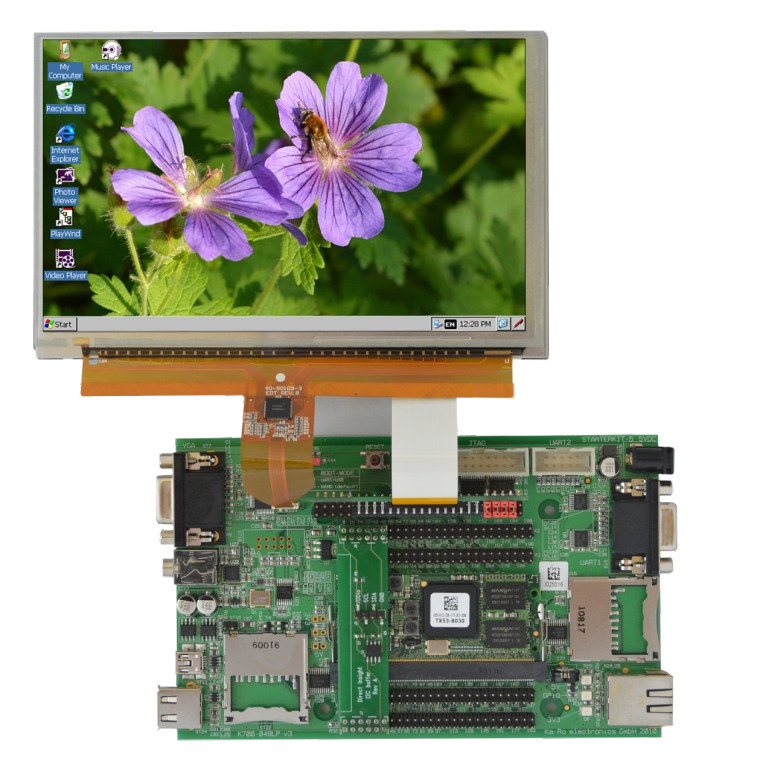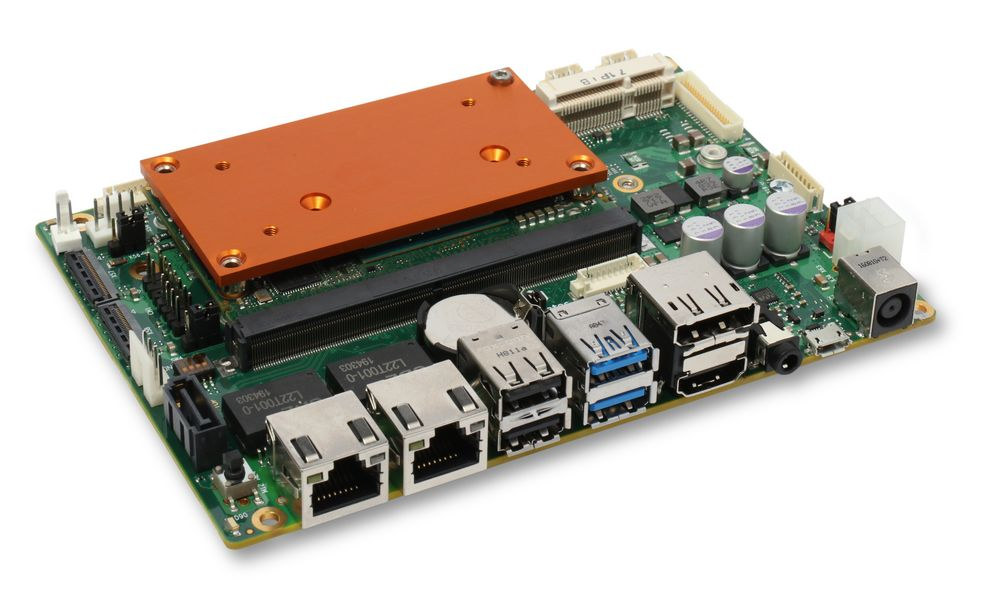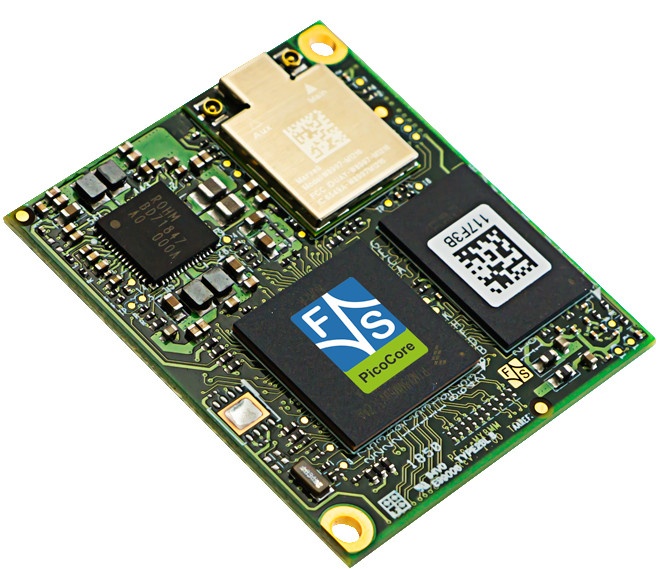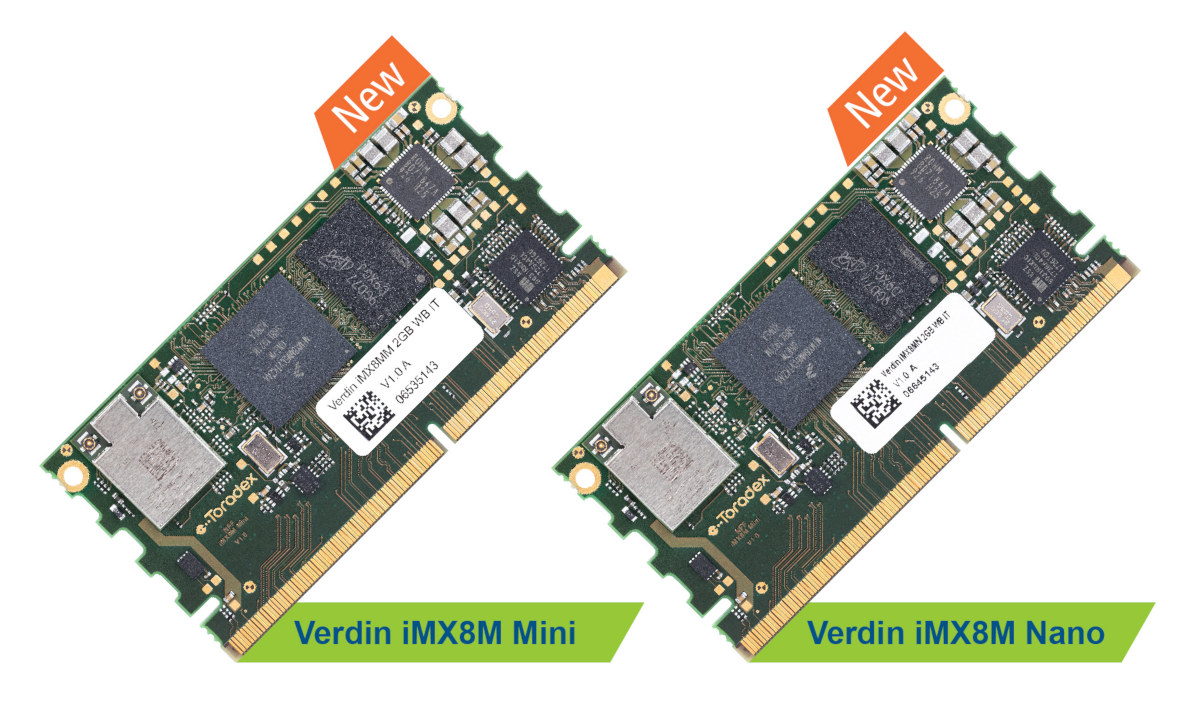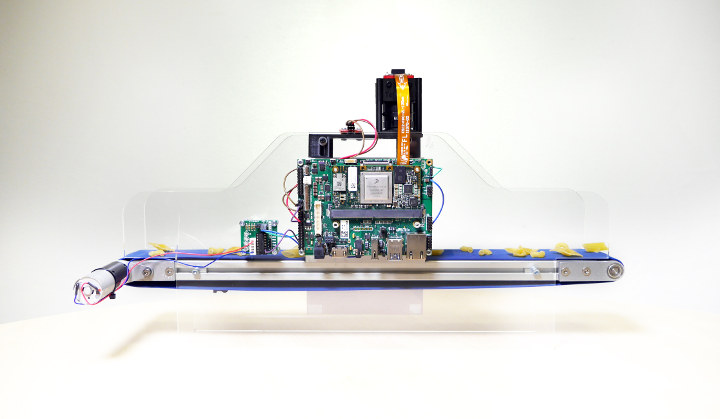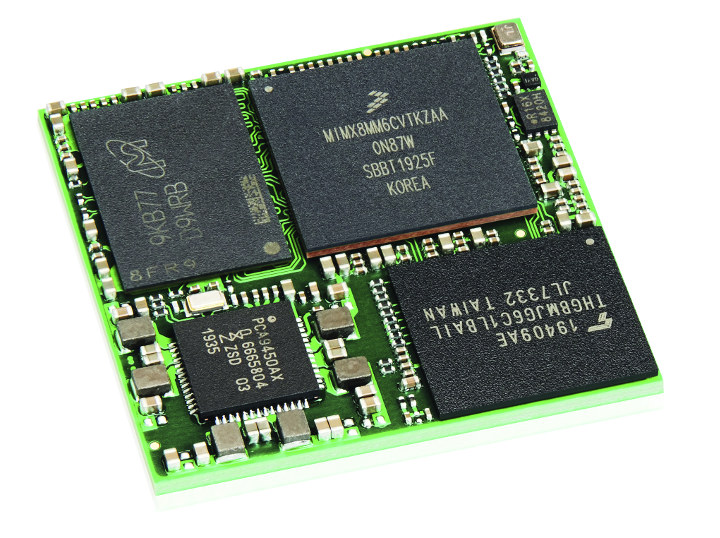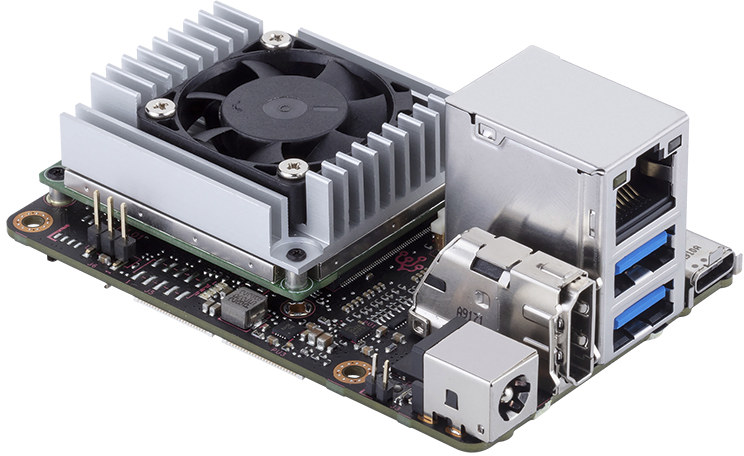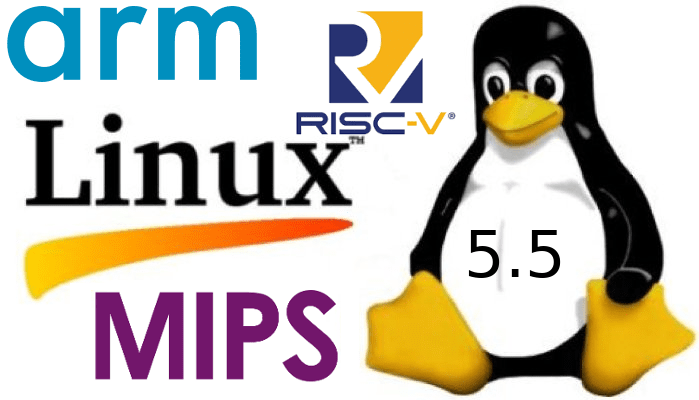UK-based Direct Insight has recently unveiled TRITON-TX8M system-on-module (SoM) powered by NXP i.MX 8M Mini or Nano processor, coupled with up to 2048MB DDR3L and a 4GB eMMC flash. The tiny (68 x 26 mm) SODIMM module is pin-compatible with the company’s earlier TRITON-TX i.MX6 / i.MX8 module family, and currently support Linux and Windows 10 IoT Core, with a QNX 7.0 BSP in the works. TRITON-TX8M SoM specifications: SoC TRITON-TX8MM – NXP i.MX8M Mini Quad 4x Arm Cortex-A53 processor @ 1.6 GHz with real-time Cortex-M4F core, Vivante GC NanoUltra 3D GPU + GC320 2D GPU, 1080p VPU TRITON-TX8MN – NXP i.MX8M Nano Dual 2x Arm Cortex-A53 processor @ 1.4 GHz with real-time Cortex-M7 core, Vivante GC7000UL GPU with OpenGLES 3.0, OpenCL and Vulkan support System Memory – 512MB, 1GB, or 2GB RAM Storage – 4GB eMMC flash 200-pin SODIMM200 edge connector with Storage – 2x SD Card/SDIO Display – […]
Congatec conga-SMC1 3.5″ Carrier Board is Designed for NXP i.MX8 SMARC Modules
Last year, Congatec introduced SMARC 2.0 compliant systems-on-modules based on NXP i.MX 8, i.MX 8M Mini and i.MX 8M Nano processors, together with Conga-SEVAL carrier board designed for evaluation and early software development, but is not suitable for deployment in the field. The company has now unveiled a standard 3.5″ carrier board – conga-SMC1 – that takes any of the company’s i.MX8 SMAC modules, in order to help their customers bring products faster to market thanks to a commercial-off-the-shelf (COTS) board. Congatec conga-SMC1/SMARC-ARM carrier board features and specifications: Supported SoM – conga-SMX8 (i.MX8), conga-SMX8-Mini (i.MX 8M Mini), or conga-SMX8-Nano (i.MX 8M Nano). Future SMARC 2.0 Arm-based modules should also be supported Storage – 1x SATA III (support of SATADOM VCC PIN 7 and PIN 8), 1x SATA power (+5V, +12V), MicroSD card socket, M.2 NVMe SSD support Display Interface 1x LVDS 18/24bit single/dual channel LVDS 2x optional eDP/DSI (dependent on […]
PicoCore MX8MN is a Tiny NXP i.MX 8M Nano Computer-on-Module
The PicoCore MX8MN Nano carries the NXP i.MX 8M Nano F&S Elektronik Systeme has announced the development of the smallest i.MX 8M based CoM yet: the PicoCore MX8MN Nano. Previously we had reported on the Congatec Conga-SMX8 Nano which was a fairly small CoM compliant with SMARC 2.0 standard. The PicoCore MX8MN is based on the NXP i.MX 8M Nano CPU with 1 to 4 Arm Cortex-A53 cores and a Cortex-M7 real-time core. The Nano is set to carry up to 8GB RAM and 32 GB eMMC, with optional WiFI/BT and support for -40º C to 85º C temperature ranges. Similar to Predecessor The PicoCore MX8MN Nano is very similar in structure to the PicoCore MX8MM Mini CoM, but with a different i.MX 8M Mini processor featuring the same Arm Cortex-A53 cores, but the Cortex M4 real-time core is changed to a more powerful Cortex-M7 core in the MX8MN Nano. […]
Toradex Launches New Verdin Arm SoM Family Starting with iMX8M Mini/Nano Modules
So far, Toradex had two Arm-based system-on-module families with the smaller, lower-power Colibri and more powerful Apalis modules. The Colibri form factor was first defined in 2005, and the company is still maintaining it, but since then new interfaces have emerged, so Toradex has now designed a new low-power module family called Verdin. Toradex Verdin modules offer more I/Os with a 260-pin edge connector, include a battery-ready design with a wide input voltage range (3.3 to 5V), low power 1.8V IOs, the ability to easily extend power management to carrier board peripherals, and off-the-shelf thermal solutions. The modules are also tested for EMC, shock and vibration tolerance, and “Toradex Direct Breakout” is said to simplify signal routing on carrier boards as high speed, impedance critical signals are routed from the source IC to the edge connector on the Verdin module in such a ways to limit complexity on the carrier […]
Toradex AI Embedded Vision Starter Kit Leverages Amazon Web Services for AI and ML Applications
Toradex, Amazon Web Services (AWS), and NXP Semiconductors collaborated to create the AI Embedded Vision Starter Kit aiming to ease the development of cloud-connected computer vision and machine learning applications in industries such as industrial automation, agriculture, medical equipment, and many more. The AI Embedded Vision Starter Kit includes the following items: Toradex Apalis iMX8 System on Module (SoM) powered by NXP i.MX 8QuadMax applications processor Toradex Ixora Carrier Board Allied Vision Alvium 1500 industrial-grade MIPI CSI-2 camera All required cables and a 12VDC (30W) power supply Full software stack, including source code for running the device as well as for cloud deployment Extensive documentation 50 USD AWS credit The kit will help developers meet the must-have requirements of smart connected devices including secure connectivity, remote monitoring, OTA updates, maximum uptime & reliability, compact form factor, cost-optimized hardware, computer vision and machine learning algorithms optimized for low-power hardware, and more. […]
Kontron Launches the Smallest i.MX 8M Mini Module with 30x30mm Form Factor
Introduced in 2018, NXP i.MX 8M Mini is the first i.MX processor from the company manufactured with a 14nm process, and the low-power processor is found in several compact modules such as Variscite VAR-SOM-MX8M-MINI (38×28 mm), SolidRun i.MX 8M Mini SoM (47×30 mm), or Compulab UCM-iMX8M-Mini (38×28 mm). The smallest i.MX 8M Mini module we’ve covered so far is TechNexion XORE-IMX8M-Mini LGA system-on-module that takes just 30×30 mm of space. The TechNexion module is now joined by Kontron SoM SL i.MX8M Mini module with the same 30x30mm form factor, but a few more pins (267 vs 225). Kontron SoM SL i.MX8M Mini specifications: SoC – NXP i.MX 8M Mini quad-core Arm Cortex-A53 processor @ 1.6 GHz with one Arm Cortex-M4 real-time core @ 400 MHz, as well as 2D GPU and 3D GPU System Memory – 1GB LPDDR4 RAM (option up to 4GB) Storage – 8GB eMMC flash (option up […]
ASUS Tinker Edge T SBC Launched for $168 and Up
ASUS unveiled Tinker Edge T & CR1S-CM-A SBCs based on Google Coral Edge TPU system-on-module featuring both NXP i.MX 8M processor and Google Edge TPU co-processor for AI acceleration in May 2019, but at the time none of the boards were available. But earlier this month, ASUS officially announced the board, and it can now be purchased on various sites including Provantage (~$168.35) and Physical Computing (21,600 JPY ~ $200). It is also listed on Connection for about $198 but currently out of stock. Edge TPU module SoC – NXP i.MX 8M quad-core Arm Cortex-A53 processor with Arm Cortex-M4F real-time core, GC7000 Lite 3D GPU ML accelerator – Google Edge TPU coprocessor delivering up to 4 TOPS System Memory – 1 GB LPDDR4 RAM Storage – 8 GB eMMC Flash memory Wireless Connectivity – Wi-Fi 2×2 MIMO (802.11b/g/n/ac 2.4/5GHz) Bluetooth 4.2 Baseboard Storage – MicroSD card slot Networking – Gigabit […]
Linux 5.5 Release – Main Changes, Arm, MIPS and RISC-V Architectures
Linux 5.5 has just been released by Linus Torvalds: So this last week was pretty quiet, and while we had a late network update with some (mainly iwl wireless) network driver and netfilter module loading fixes, David didn’t think that warranted another -rc. And outside of that, it’s really been very quiet indeed – there’s a panfrost driver update too, but again it didn’t really seem to make sense to delay the final release by another week. Outside of those, it’s all really tiny, even if some of those tiny changes touched some core files. So despite the slight worry that the holidays might have affected the schedule, 5.5 ended up with the regular rc cadence and is out now. That means that the merge window for 5.6 will open tomorrow, and I already have a couple of pull requests pending. The timing for this next merge window isn’t optimal […]


